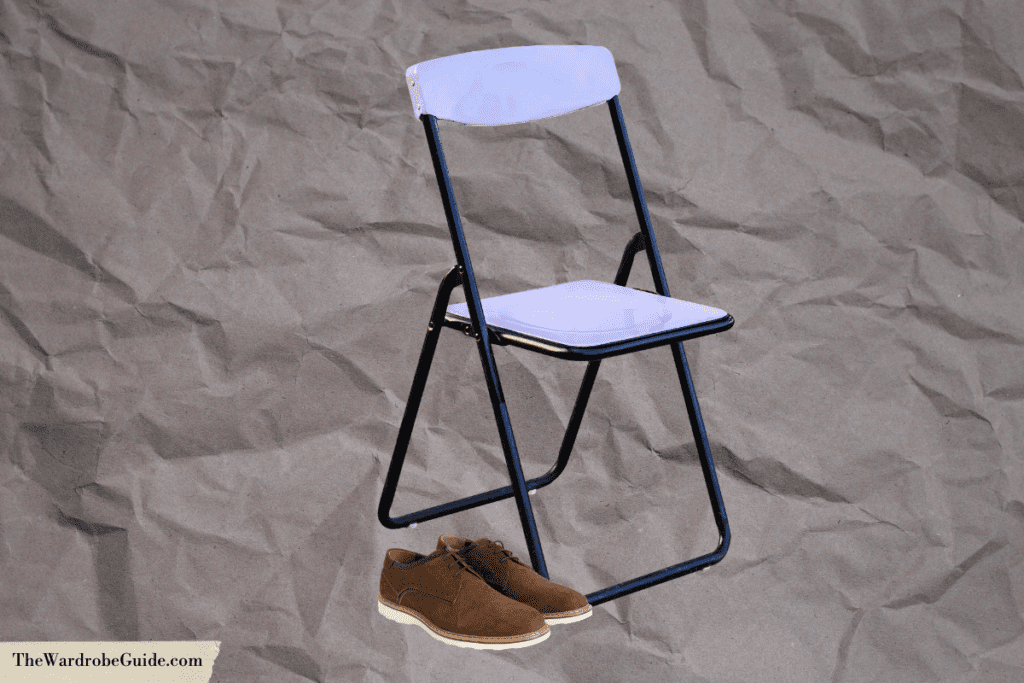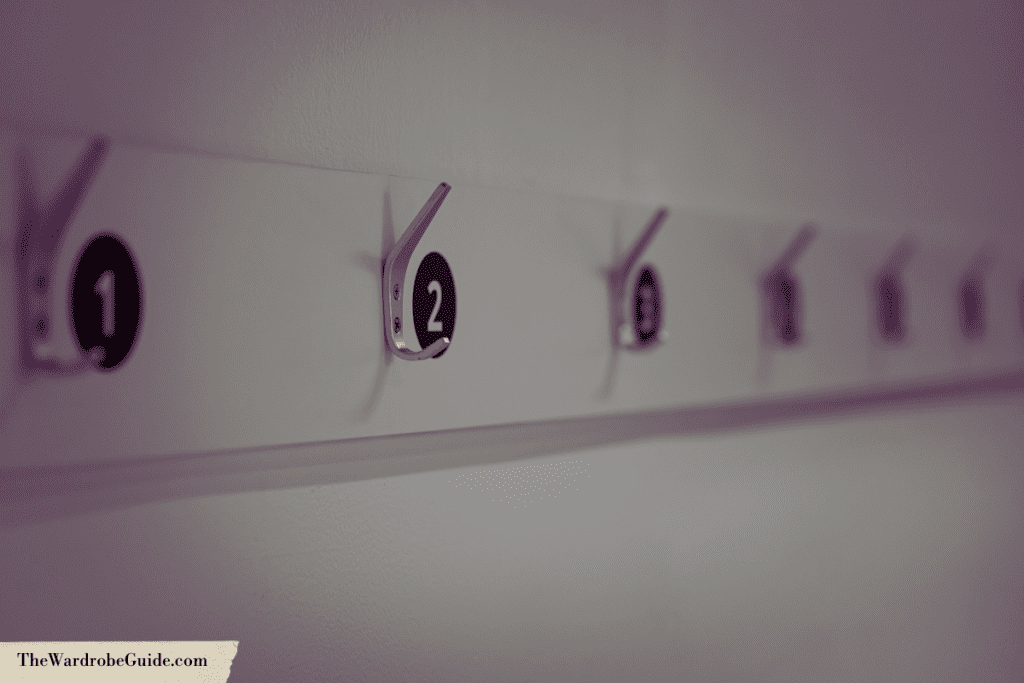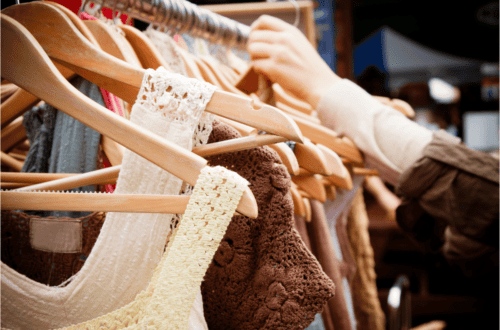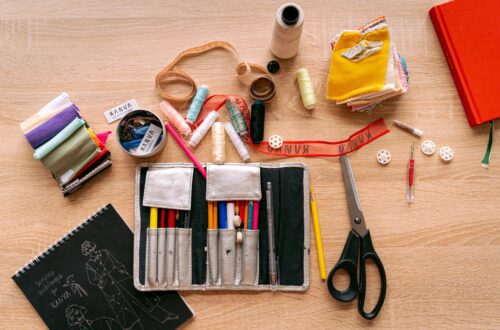An essential member of any Broadway wardrobe team is its swing Dressers. These dressers might be called to do any track in the show at the last minute. They also might be tasked with knowing multiple tracks of the same show. Because of this, it’s essential for a wardrobe swing to have fantastic notes to reference while moving through the show.

When you start training, you will receive notes from the dresser who built the track that you are learning. However, it’s impossible to include every little detail in track notes before they become extremely dense and difficult to read. In this article, we are going to take a closer look at the details that you can clock during your swing training to add to your personal track notes that will make you an asset as a wardrobe swing.
Read More
What to Keep in Your Dresser Apron
Complete Guide to Daywork on Broadway
What is a Wardrobe Swing?
A wardrobe swing is a substitute dresser. Similar to a substitute teacher, a swing runs a permenant dresser’s track, in the event of illness, injury, or vacation.
Swinging is one of the most difficult jobs in wardrobe. You might be required to learn the same show from 6+ different tracks. It may be hard to keep up with the details of what your actors and fellow dressers expect from you in each track. This is because you have to be aware of the nuances that exist in the tracks, and remember them.

How Does a Swing Learn a Track?
Swing training is days you get to be backstage alongside the typical dresser for a track. On a Broadway show, typical swing training can be anywhere from 2-4 performances. If you are the swing being trained, you typically can work with the dresser to figure out what your preferred way of learning a track might be. For example, if you have 3 training shows, you could opt to follow the dresser the first show, be hands on with the dresser telling you what to do for the second, then be hands on with the dresser silently following for the 3rd.

No matter what, when training, the first show is typically the swing following and asking questions for their first night back stage. This is your time to really observe everything that is going on around you, and all the motions the dresser is going through and double check the notes for you to be able to effectively perform the track.
Why Do I need to Take Extra Notes as a Wardrobe Swing?
A dresser has to write track notes for multiple different scenarios. One of those scenarios is that someone (possible the supervisor or their assistant) will have to run your track cold (without training). Because of this, the paperwork has to be easy to read and understand on the fly, and can’t be muddled with too many details or it may become confusing.
Also, It may be months between your shifts on a specific track. You also might perform three other tracks as a swing between your training and the first time performing a certain track solo. Because of this, you need to be aware of things that could trip you up when your brain isn’t used to a certain track.
Also, there are all different kinds of dressers, just as there are different kinds of people. Some dressers you train with might have different quality of notes. Some dressers have never worked as a swing, and therefore are unfamiliar with the information a swing needs to do the track. You shouldn’t assume that every packet of notes you receive has all the information you need inside.
Extra Details to Clock in Your Notes When Training on a Wardrobe Track
1) The Exact Location Where Things are Set
In wardrobe, everything from where the laundry is set out during preshow to your quick change presets have a reason why they are where they are. Whether its for convenience for the dresser’s track, or if it’s at the request of the actor. As a swing, it is your job to clock these details.
Does the dresser take the laundry out of the bag and fold it? Do they leave it in the bag and hang it somewhere? Is it set on top of the mini fridge? Is it hung on the dressing room doorknob?
When it comes to the track, noting small spacing details could be important.
Things like your folding chair being set between the 2nd and 3rd hook, as opposed to under the 3rd hook can also be important.
Are the shoes set with the toes out, or with the toes facing the chair?
These kinds of details can seem insignificant during training, but could cause a panic if you don’t know the answer while you are running the show for the first time alone.

2) Small Preset/Quick Change Details
This requires you as the training swing to be extremely attentive to what the dresser is doing at all times.
Are they folding the socks over the top of the shoes in the preset? Or are they scrunching them up and puddling them?
Is the button up shirt set on the chair over or under the pants?
Are they setting the belt in the jeans going clockwise? Or counterclockwise?
There can also be details during the change that come up which you might want to confirm. Most things happen for a reason backstage. Because of this, it’s better for you to get confirmation during your training of that reason.
For example, if there are shoe changes in the track, you might note that they always put the right shoe on first, and then the left shoe. Or that they add both shoes before zipping both shoes.
3) How the Track Syncs with the Show
It is extremely easy to fall into panic mode as a swing. When you are dropped into a show that you don’t know well, it is hard to know how much time you have for anything. Because of this, it is helpful to note “checkpoints” for yourself in the show.
This can be as simple as writing the songs that are happening into your swing notes.
You can also talk to the dresser who is training you about good cue lines for certain actions.
Knowing how the track syncs with the show will help you know the pace you need to work throughout the show. It is also helpful when figuring out good bathroom breaks in the show.
4) Hanger Choreography
Sometimes, hanger types and the way things are hung are important to the maintaining of costumes. Sometimes dressers can get picky about hangers or can get attatched to a certain hanger.
Is something being hung together with another piece? Does it need a velvet hanger? Is the dresser using a piece’s hanging loops, or are they using a clip hanger? Is there a special hanger that a certain piece always goes on?
These details will really impress the dresser you are covering. It really shows off your ability to maintain their costumes and organization while they were out. It also really shows off your attention to detail as a swing.

5) When There’s Time to Look at Notes
This is another key detail that will really help alleviate your own stress when it comes to the first time you are performing a track alone. These days, tracks tend to be extremely busy. Many dresser tracks have stints of time which you might not be able to look at yout notes. Knowing when you have time to look at your notes will help you in your journey to memorizing the track. This is because it will help you know what chunks of the track are good to have memorized together.
6) Do Two Tracks on the Same Show do the Same Task Differently?
If you are learning multiple tracks in a show; specifically, multiple ensemble tracks, you might be seeing the same people/same costumes across different dresser tracks. You also might find that different dressers might handle the same people/costume pieces differently. This is an easy thing to trip up on if you are working multiple tracks. For example, does one track set a jacket at a change preset on a hanger, while a different track hangs the jacket straight on the hook?

Does one track pool all their tshirt changes on the hooks above their chairs, while a different track sets the tshirt flat on the chair?
If you don’t note these differences in your training, they can really trip you up when you are solo dressing on multiple tracks, sometimes even doing different tracks of the same show in a single day.
7) Passing Comments the Dresser Might Mention
Ever so often, while talking you through the show, a dresser might make an off handed comment that is actually extremely important information. While you are observing all the actions of the show closely during your swing training, you also want to make sure you are actively listening to the dresser.
Questions To Ask During Your Wardrobe Swing Training
In addition to watching and listening, your swing training is a time for you to get clarification for any information you might think you will need if you were running that specific track for an extended time. Depending on who you are/ your experience as a dresser, these questions might be different for you. Some good examples of questions you might have during your training are as follows:
Is there anything different in the track if ther is an understudy on?
Where are the understudy clothes kept? Am I responsible for switch outs? Or will the supervisor/ day work take care of them?
Do you do anything different on 2 show days?
Is there anyone you dress on your track who is very particular?
How long exactly is this quick change? Is there any room for error to happen?
Are there any questions your sure to ask when you are training on a swing track? Is there anything specific that a swing does while you are training them that really impresses you? Let us know in the comments!







